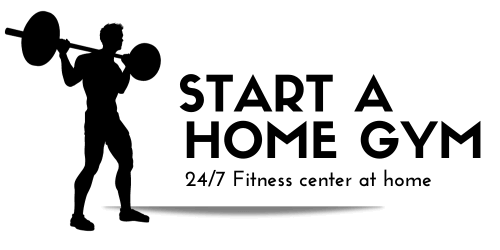Are you tired of your home gym workouts being disrupted by noisy neighbors or distracting sounds from the rest of your house? Look no further – we have the solution for you! In this article, we will explore some easy and effective DIY home gym soundproofing techniques that will transform your workout space into a peaceful haven. Whether you’re into intense cardio sessions or love lifting heavy weights, these simple tips will ensure that you can focus on your fitness goals undisturbed. Say goodbye to unwanted noise and hello to the ultimate workout experience!
Choose the Right Location
Choosing the right location for your home gym is crucial when it comes to soundproofing. Evaluating the space before setting up your equipment is essential to ensure optimal soundproofing results. Consider a room that is isolated from the rest of the house, preferably with no shared walls with bedrooms or common areas. This will reduce the risk of disturbing others while you work out. It’s also essential to consider the neighbors, especially if you live in an apartment or a townhouse. Avoid setting up your home gym in high-traffic areas where noise may easily travel, such as near the front door or next to a shared wall.
Upgrade the Walls
One of the most effective ways to soundproof your home gym is by upgrading the walls. Adding mass to the walls with insulation can significantly reduce noise transmission. Insulation helps to absorb and dampen sound waves, preventing them from traveling through the walls. Additionally, installing acoustic panels on the walls can further enhance soundproofing. These panels are designed to absorb sound and minimize echo, creating a more acoustically friendly environment. Another option to consider is applying soundproof paint, which contains additives that help reduce noise transmission through the walls.

Soundproof the Floor
To minimize impact noise and vibrations, it’s important to soundproof the floor of your home gym. Adding carpet or mats can help reduce noise caused by footfalls and weightlifting equipment. The thick fibers of a carpet or the cushioning effect of rubber mats can absorb and dampen the sound, preventing it from traveling to the rooms below. Installing underlayment beneath the flooring can further enhance soundproofing. Underlayment acts as a barrier, reducing impact noise and providing additional cushioning. Using rubber tiles for the flooring is another effective option as rubber has excellent sound-absorbing properties.
Seal Windows and Doors
Windows and doors are common sources of noise leakage in any room, including a home gym. Preventing sound from escaping through these openings is essential for effective soundproofing. Weatherstripping is a simple yet effective solution to seal the gaps around windows and doors. It involves applying strips of material to create a tight seal and prevent sound from escaping or entering. Soundproof curtains can also be installed over windows to further reduce noise transmission. These curtains are made of dense, noise-absorbing materials that can block outside noise and improve sound isolation. Adding door sweeps to the bottom of doors is another effective method to seal gaps and prevent sound leakage.

Address Ceiling Noise
Noise from the ceiling can be a major concern in a home gym. To reduce the impact of noise from the floor above, it’s important to address the ceiling. Installing acoustic tiles on the ceiling can help absorb sound and minimize echo. These tiles are designed to enhance acoustics by reducing sound reflections and echoes, creating a more controlled environment. Hanging soundproofing curtains from the ceiling can also be effective in reducing noise transmission. These curtains contain noise-blocking materials that can absorb and dampen sound waves. Additionally, adding a drop ceiling can provide an extra layer of sound insulation, further reducing noise from above.
Reduce Equipment Noise
The noise generated by exercise equipment can be a significant source of disturbance in a home gym. It’s important to take measures to reduce equipment noise to create a quieter workout environment. Using vibration pads underneath the equipment can help minimize vibrations and noise transmission to the floor. These pads absorb vibrations and prevent them from traveling through the floor. Investing in quieter equipment is another effective solution. Look for exercise machines that are specifically designed to be noise-reduced or have features that minimize the generated noise. Regular maintenance and lubrication of the equipment can also help reduce noise by ensuring smooth operation.

Manage Echoes
Echoes can create an unpleasant and distracting workout environment in a home gym. To manage echoes, it’s important to add furniture and soft surfaces to the room. Furniture, such as couches or bean bags, helps absorb sound and prevents it from bouncing off the walls. Soft surfaces, such as area rugs or wall hangings, can also help reduce echo by absorbing sound waves. Additionally, using acoustic panels or tiles on the walls can further enhance sound absorption and reduce echoes. Another option is to hang curtains or drapes, which can help absorb and diffuse sound waves, minimizing the occurrence of echoes.
Control Air Vent Noise
Air vents can be a source of unwanted noise in a home gym. To control air vent noise, consider installing acoustic vent covers. These covers are designed to reduce the noise that travels through the vents while still allowing proper airflow. Additionally, adding soundproofing material to the ducts can further minimize noise transmission. This can involve applying foam or insulation around the ducts to absorb sound waves. If possible, consider relocating the vents to a less prominent area of the room to reduce noise exposure during workouts.

Use White Noise
White noise can be a useful tool for masking external noises and creating a more peaceful workout environment. Installing a white noise machine in your home gym can help drown out surrounding sounds and create a consistent background noise. The soothing sound of nature, such as soft music or nature sounds, can also be effective in providing a calming ambiance. If desired, you can even create your own DIY white noise by using a fan or a sound machine app on your mobile device.
Consider Professional Help
If you’re struggling to achieve the desired level of soundproofing in your home gym, it’s worth considering seeking professional help. Consulting with a soundproofing expert can provide valuable insights and guidance tailored to your specific needs. They can assess the acoustics of your home gym, identify areas that need improvement, and recommend the best soundproofing techniques and materials. Hiring a contractor experienced in soundproofing can also be a practical option. They can handle the installation of soundproofing materials and ensure that the job is done correctly and effectively. Exploring professional soundproofing materials that are specifically designed for gym environments can also be beneficial in achieving optimal soundproofing results.
By following these DIY home gym soundproofing techniques, you can create a quieter and more enjoyable workout space. Consider the specific needs of your home gym and implement the appropriate soundproofing solutions for each area. With a well-planned and properly soundproofed home gym, you can focus on achieving your fitness goals without disturbing others or being disturbed by external noise.



